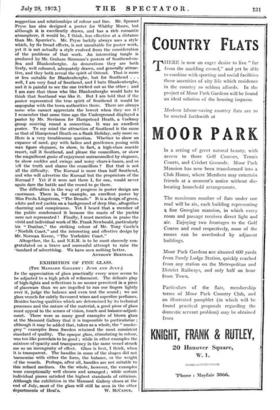IN the appreciation of glass practically every sense seems to
be adjusted to a high pitch of refinement. The delicate play of high-lights and reflections is no sooner perceived in a piece of glassware than we are impelled to run our fingers lightly over it, judge the balance and even test the sound ; we use glass vessels for subtly flavoured wines and superfine perfumes. Besides having qualities which are determined by its technical processes and the nature of the material, a good piece of glass
must appeal to the senses of vision, touch and balance-adjust- ment. There were so many good examples of blown glass at the Mansard Gallery that it is impossible to particularize ; although it may be added that, taken as a whole, the " smoke- grey " examples from Sweden retained the most consistent standard of quality. The opaque glass, stimulating in colour, was too like porcelain to be good ; while in other examples the mixture of opacity and transparency in the same vessel struck me as an incongruity of effect. Glass is best, I think, when it is transparent. The handles in some of the shapes did not harmonize with either the form, the balance, or the weight of the vessels. Perhaps, after all, handles are not suitable to this refined medium. On the whole, however, the examples were exceptionally well chosen and arranged ; while certain individual pieces satisfied the highest standards of criticism. Although the exhibition in the Mansard Gallery closes at the end of July, most of the glass will still be seen in the other






































 Previous page
Previous page